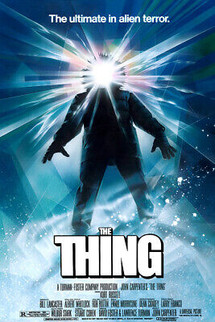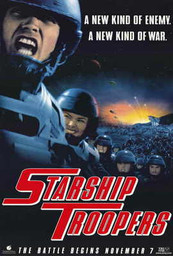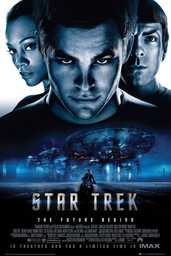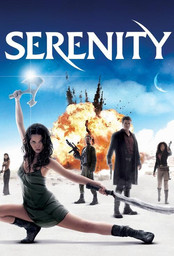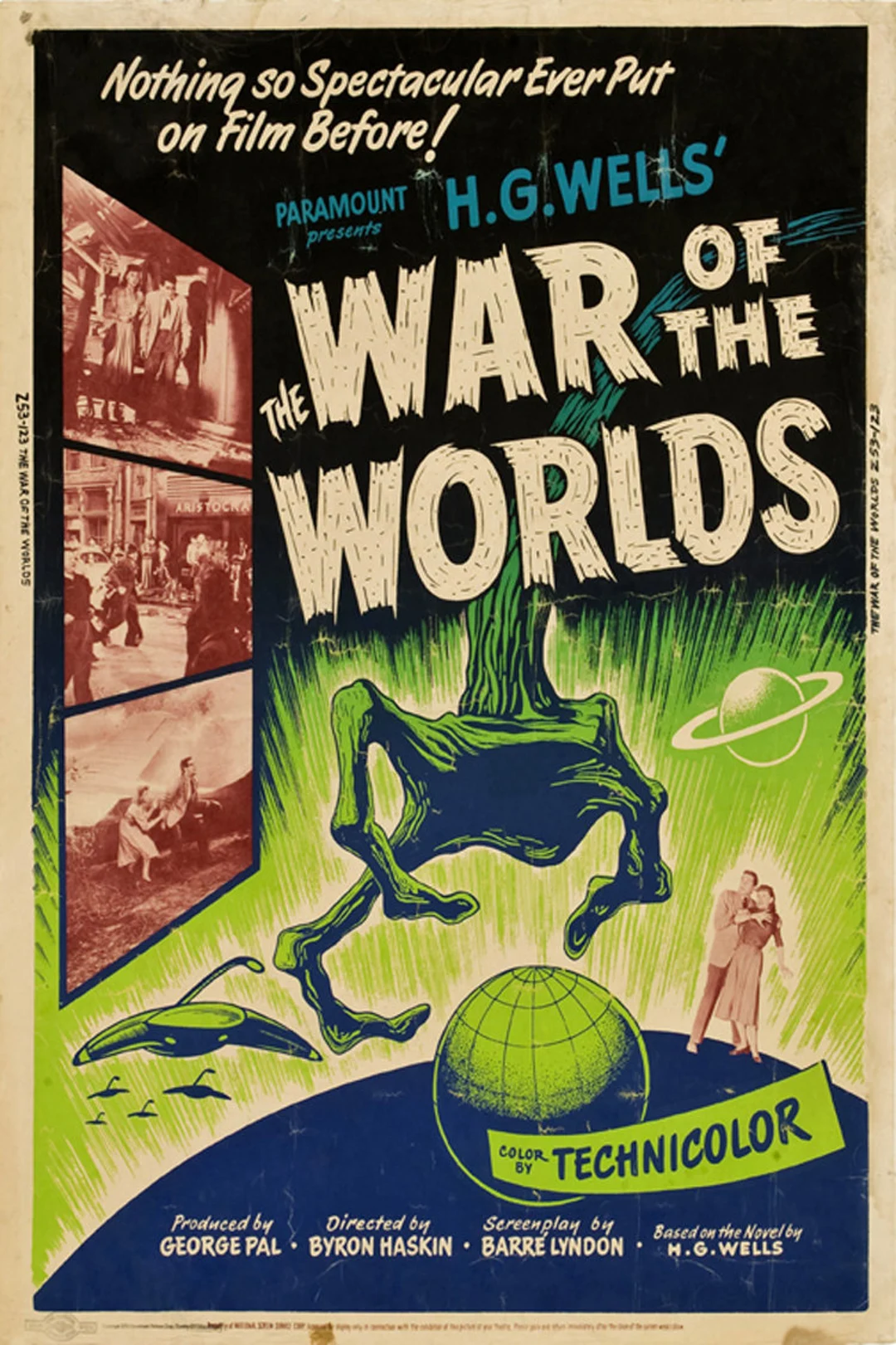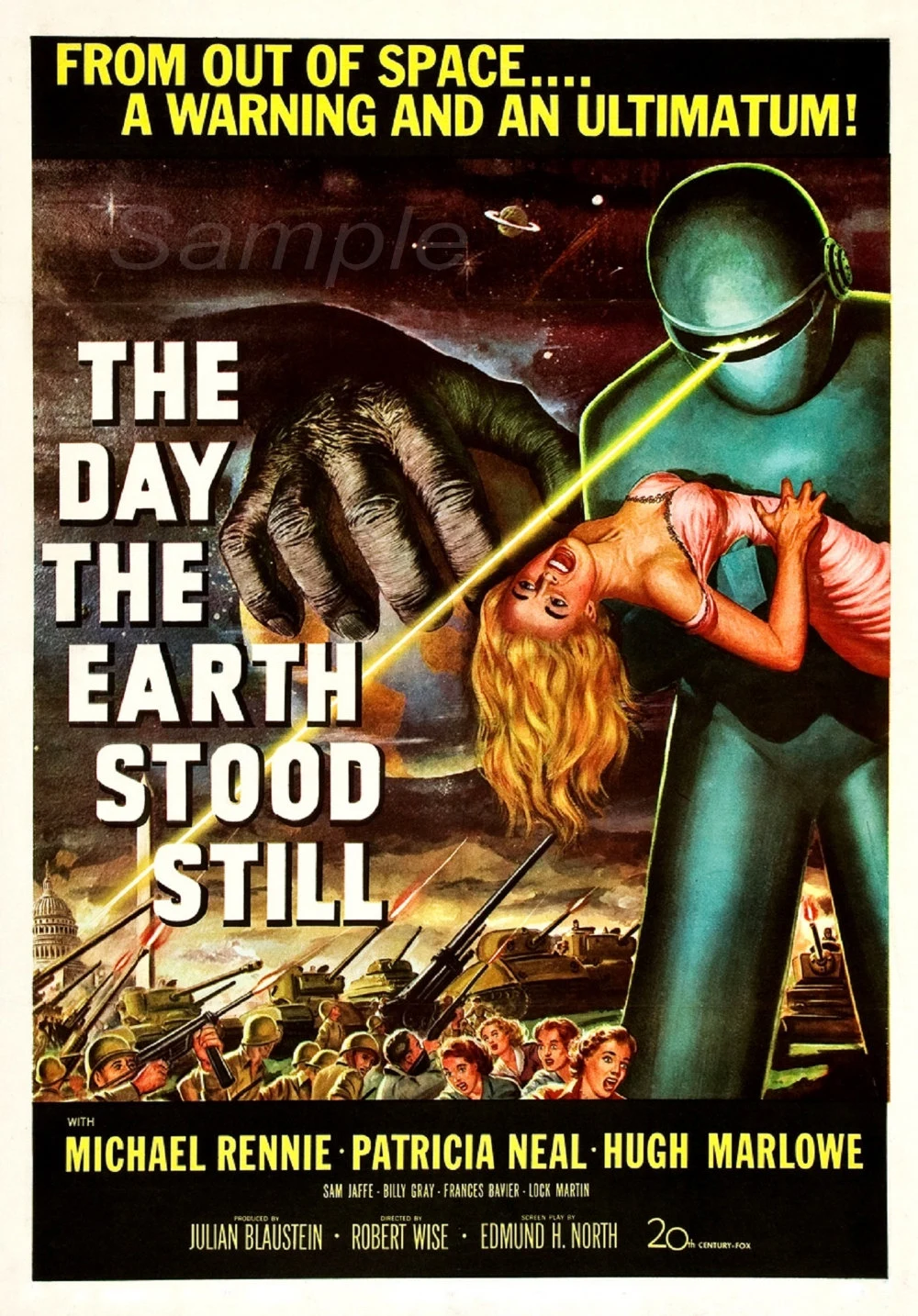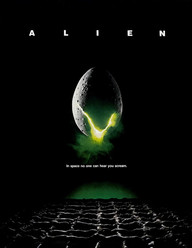The Best Alien Films (or movies with aliens in them)
- Scott Barnard

- Oct 20
- 9 min read
Updated: Dec 10

Introduction
This list isn’t about the Alien franchise specifically, but rather a collection of films that feature aliens in some form: philosophical, monstrous, comedic, heroic, or absurd. These are my personal recommendations - the films that have stuck with me, made an impact, and continue to shape the way I think about alien stories in cinema. Some I return to again and again (Annihilation). Some are defined by their unforgettable score (the Imperial March,) others by their soundtracks (or mixtapes as heard in Guardians of the Galaxy). Many are crafted by some of Hollywood’s most famous directors and stars. Some are technically brilliant, some are heartfelt, and others are pure, joyful chaos. Together, they reflect the full spectrum of how cinema imagines the otherworldly.
Note: There may be spoilers for some of these.
Philosophical / Thought-Provoking Science Fiction
Alien (1979)
Ridley Scott’s Alien remains a benchmark for how to blend cosmic wonder with intimate horror. Giger’s biomechanical creature design is sexual, violent, and disturbingly elegant. The facehugger (the nice term for face rape) sequence is surgical in its stillness, followed by the explosive chestburster moment that changed sci-fi horror forever. The cinematography keeps the alien mostly in shadow, letting the mind imagine something worse than any full reveal. The film’s slow pace and growing atmosphere of mistrust make it timelessly terrifying.
Arrival (2016)
What stands out most in Denis Villeneuve’s Arrival is its quiet intelligence. The Heptapods’ inky, circular language unfurls slowly through long, patient shots. The moment Louise truly understands their language reframes the entire story, bending time and emotion together. The mist-filled staging and ethereal score create a meditative space, rewarding viewers who lean in and think with the film.
Annihilation (2018)
Alex Garland’s Annihilation feels like stepping into someone else’s fever dream. The Shimmer isn’t a creature so much as an alien way of reorganising reality. Flowers grow in human shapes, deer wear crystal antlers, and a bear screams with a human voice. The camera often lingers too long, forcing you to sit with the transformations. The final scene, where the alien mimics Lena in a silent dance, is one of the most quietly unnerving sequences in modern sci-fi. It’s ambiguous and refuses to explain itself, and that’s exactly why it stays with you.
Dune (2021 & 2024)
Villeneuve’s Dune presents alienness not through invaders but through ecology. The sandworms are massive, reverential creatures captured in vast, wide shots that make you feel their scale. The Fremen stillsuits are both functional and spiritual, while the imperial uniforms exude control. Sound design drives everything: the thumpers, the whisper of spice winds, the guttural calls of approaching worms. It’s political, mystical, and ancient all at once - a vision of the alien as a living environment.
Horror / Suspense
Signs (2002)
M. Night Shyamalan’s Signs thrives on what isn’t shown. The sound of aliens scratching on doors, the creak of wood, the static of baby monitors - all these are scarier than any CGI. The infamous “birthday party” video of the alien is a masterclass in sudden, primal fear. The ending didn’t fully work for me; the religious aspect feels like a narrative shortcut. But the build-up is brilliant in how it uses sound and restraint to let the audience’s imagination do the heavy lifting.
The Thing (1982)
Carpenter’s The Thing is paranoia distilled. In the icy isolation of Antarctica, trust becomes lethal. The alien’s ability to perfectly imitate makes every conversation a potential death trap. The practical effects are grotesque and stunning - bodies splitting open, tendrils whipping across the frame, the infamous defibrillator scene. The camera often pulls back just enough to let you scan the room nervously. Its simplicity - who is real, who isn’t - paired with escalating horror is unforgettable.
Predator (1987)
Predator is pure cat-and-mouse, but from both perspectives. The alien’s heat vision and distinctive clicking sounds immerse us in its predatory viewpoint. Arnold Schwarzenegger’s Mr Universe muscle-bound commandos are slowly stripped of their confidence, turning the hunter into the hunted. The makeup and prosthetics on the Predator’s face are iconic and nightmare inducing when it finally removes the mask and the reveal feels earned. The film is peppered with memorable lines (“If it bleeds, we can kill it”) and shot with a gritty, humid energy that makes the jungle feel alive and threatening.
Action / Adventure
Edge of Tomorrow (2014)
A kinetic blend of alien invasion and time loop. Tom Cruise’s repeated deaths become both a spectacle and a way to sharpen his character. The Mimics are chaotic, tentacled flashes of movement - alien in both form and behaviour. The film’s crisp editing and clear action direction make the looping structure easy to follow. It’s a smart, entertaining ride that balances concept with sheer momentum.
Starship Troopers (1997)
Verhoeven’s military bug-splattering adventure is both a riot of action and a sly satire. The aliens are both monstrous and oddly sympathetic - swarms fighting a militaristic human machine. The film’s clean, propaganda-style camera work and uniforms mimic fascist aesthetics while delivering gory spectacle. It’s easy to enjoy as a popcorn action film, but there’s more going on if you look.
Star Wars I–VI
The original and prequel trilogies are sprawling space operas where aliens are everywhere: background creatures, co-pilots, mentors, villains. The Imperial March alone has become cultural shorthand for power and menace. The cantina scene in A New Hope remains one of the most effective uses of makeup and costuming to populate a universe with diverse lifeforms. And out of all of these ones, The Empire Strikes Back is the best, but they’re noteworthy films for their cultural significance, scale, their archetypes, and their sheer imaginative reach.
Star Trek films
Star Trek approaches aliens with curiosity rather than fear. Diplomacy, ethics, and exploration drive the stories, with makeup and prosthetics giving us memorable species like Klingons and Vulcans. The films are less about suspense and more about ideas - how we respond to difference, and how technology intersects with morality.
Guardians of the Galaxy Vol. 1 & 2 (2014, 2017)
James Gunn’s films are explosions of colour, music, and personality. The soundtrack ties human nostalgia to alien landscapes, grounding the cosmic adventure. The ensemble cast - misfits, killers, talking raccoons - creates chemistry that feels alive. The makeup and prosthetics (especially Drax and Nebula) give the characters texture, while the CGI worlds are playful rather than sterile. For me, these films outshine Star Wars in sheer fun and heart. Vol. 3 lost some of that spark, particularly the ending, but the first two are endlessly rewatchable.
The Fifth Element (1997)
Luc Besson’s film is like a glittering fever dream. The language invented for Leeloo, the costuming by Jean-Paul Gaultier, the operatic alien diva - everything feels heightened and theatrical. The taxi chase through the vertical city is a brilliant mix of practical effects and CGI for its time. Gary Oldman chews the scenery, but it’s Milla Jovovich who steals the film with a mix of innocence, beauty, and fierce energy. It’s bleak in concept but dazzling in execution.
Serenity (2005)
Whedon’s ensemble space western has a scrappy charm. The Reavers are terrifying in their feral, human-gone-wrong design, but the heart is in the crew dynamic. The camera work often follows characters fluidly through the ship, giving a sense of lived-in space. It’s a blend of action, humour, and heart that feels distinct from the sleekness of most sci-fi.
Total Recall (1990)
Set on Mars, the aliens are more mutant humans shaped by the planet’s harsh environment. The prosthetic work on characters like Kuato is brilliantly grotesque. The film is a wild ride of shifting realities, with bold camera moves and vibrant sets. It’s less about aliens as external beings and more about alienation itself, but it earns its place here.
Avatar (2009)
James Cameron’s epic makes first contact through avatars of alien bodies. The world of Pandora is richly realised through groundbreaking CGI and detailed soundscapes. The glowing forests and floating mountains remain visually stunning. I loved its concept and spectacle but didn’t feel drawn to the sequels; still, it’s a milestone in how aliens can be both beautiful and politically charged.
Superman (various, esp. Henry Cavill era)
Superman is the ultimate alien raised as human. The Cavill films lean into his god-like difference, portraying him as both saviour and outsider. The sleek Kryptonian costumes and ship designs contrast sharply with the grounded visuals of Earth. While I’ve never been a huge fan of Superman, the films deserve to be here for cultural relevance alone. I appreciate how these films use alienness to explore power, morality, and belonging.
Comedy / Satire / Absurdist
Mars Attacks! (1996)
Tim Burton’s gloriously silly alien invasion is a love letter to B-grade sci-fi. The Martians’ oversized brains, hilarious attempts to seduce humans, and that unforgettable “ack ack” ray gun sound are pure joy. The cast of big-name actors give intentionally wooden performances, echoing the genre’s roots. Released alongside Independence Day, it makes that film look straight-laced by comparison. It’s absurd, clever, and gleefully destructive.
Paul (2011)
Simon Pegg and Nick Frost road-trip with a wisecracking alien voiced by Seth Rogen. The film riffs affectionately on alien tropes, from Area 51 conspiracies to government chases. Paul’s CGI blends surprisingly well with the live action, making him feel like part of the group rather than a gimmick. It’s light, funny, and deeply rooted in nerd culture.
Galaxy Quest (1999)
A pitch-perfect parody of Star Trek that’s both hilarious and heartfelt. Even if you’ve never seen Star Trek, it works because it respects its source. Sigourney Weaver shines, and Alan Rickman delivers perfect deadpan. The alien makeup on the Thermians is intentionally awkward, fitting their innocent mimicry of human actors. It’s one of the cleverest sci-fi comedies ever made.
Hitchhiker’s Guide to the Galaxy (2005)
Douglas Adams’ absurdity survives mostly intact. Marvin the depressed robot is both funny and a little too real. Sam Rockwell’s performance as Zaphod is manic perfection. The production design embraces the weird, with aliens that look handmade rather than sleek. It’s a reminder that sci-fi can be silly and profound at the same time.
Evolution (2001)
A goofy alien invasion comedy that may not have aged perfectly, but it’s fun. The alien designs escalate from single-cell blobs to full-scale creatures, often in deliberately ridiculous ways. It’s light, irreverent, and playful.
The Faculty (1998)
Robert Rodriguez’s movie went beneath the radar but it brings his kinetic energy into a high-school alien invasion. The teachers are the aliens, and the students have to figure it out before they’re killed. It’s funny, sharp, and uses alien tropes to skewer teenage dynamics. The creature effects are practical and slimy in the best way.
Heartfelt / Emotional
E.T. the Extra-Terrestrial (1982)
Spielberg’s film frames the alien not as threat but as friend. E.T.’s design is iconic - wrinkled, expressive, instantly memorable. The flying bicycle scene, scored with Williams’ triumphant music, remains one of cinema’s most emotional moments. It’s a heartfelt reminder that alien stories can be intimate and childlike.
Bumblebee (2018)
A surprisingly warm entry in the Transformers franchise. The bond between Bumblebee and Charlie gives the story heart, while the design of Bumblebee himself leans into expressive eyes and body language. It’s family-friendly without being saccharine.
Classics
War of the Worlds (1953 & 2005)
Both versions (not including what looks to be an utterly terrible Ice Cube version) deliver thrilling alien invasions with iconic imagery - tripods striding through cities, humans running helplessly. The sound design of the tripods’ horns in Spielberg’s version is unforgettable. And the original’s sountrack is one of the greatest movie scores ever produced. Spolier alert! The ending, where viruses kill the aliens, has always bothered me; it feels implausible that a spacefaring species wouldn’t know about harmful microbes. Still, both are entertaining snapshots of their eras.
The Day the Earth Stood Still (1951)
This classic treats the alien as a superior moral judge. Gort’s imposing presence, achieved through simple but effective costume work, lingers in the cultural memory. The film is serious, intelligent, and direct in its message: humanity must change or perish.
Other
Venom (2018)
While I loved the comics’ exploration of symbiosis and alien identity, the film didn’t fully deliver for me. The CGI symbiote is visually striking, but the story never quite lives up to the concept - and it is a great concept, which is why it’s on this list. I didn’t pursue the sequels. If you are interested though in a venom story and its concept, Donny Cates’ comics started in the same year. Check out his Venom and Absolute Carnage for a better story. And if you love the Guardians of the Galaxy, there’s a comic where venom is a member of the Guardians.
Closing Reflection
Some of these films are popcorn flicks, sitting just above memorable on the scale - loud, fun, and perfect for a Friday night. Others hit much deeper, offering observations about language, ecology, paranoia, power, and what it means to be human in an unfathomably large universe. Together, they show the range of what alien cinema can do: unsettle us, make us laugh, make us think, and sometimes simply entertain. Whether it’s a creature lurking in the shadows, a misunderstood friend, or a mirror held up to our own flaws, aliens in film continue to be a lens through which we imagine ourselves.











